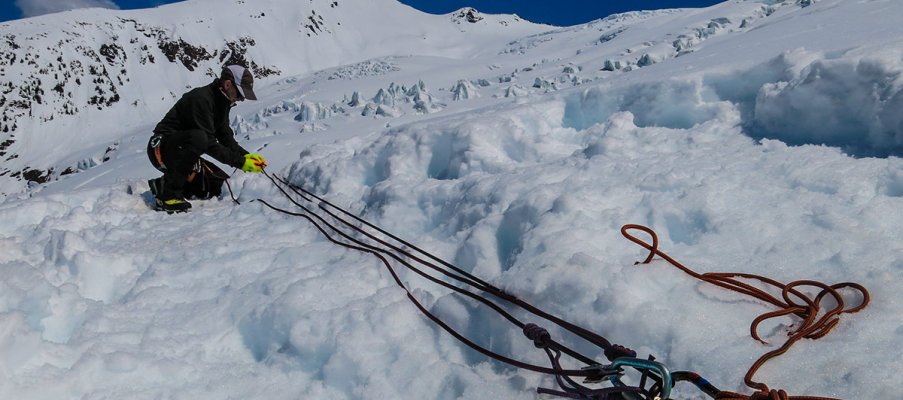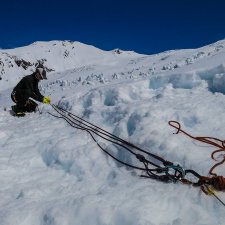Below are several videos by NCMG owners Jeff Ward and Larry Goldie. These videos highlight some of the techniques you will learn on your Crevasse Rescue and Glacier Travel Course and are a good reference to use in preparation for your course. You will be learning a lot of information on this course and the more prepared you are the more information you will retain.
Crevasse Rescue: Transfer the Load from American Mountain Guides Assoc on Vimeo.
Crevasse Rescue: Backing Up a Picket from American Mountain Guides Assoc on Vimeo.
Crevasse Rescue: Prepping the Lip from American Mountain Guides Assoc on Vimeo.
Crevasse Rescue: Hauling from American Mountain Guides Assoc on Vimeo.
Day One: Depending on the conditions and time of year, there are several areas we may choose for this program. On the first day, we will hike into a base camp, set up camp and spend the afternoon on several topics.
These will include:
- Various rope configurations
- Roping up – How far apart
- Tying off excess rope
- Prussik systems
- Ascending the rope
- Snow anchors
- Team rope travel
Day Two: We will use the previous day’s skills and venture out onto a glacier. We will discuss route finding and rope management. Touring around on the glacier will eventually lead us to a suitable crevasse for rescue practice. Here we will cover the following topics:
- Probing for hidden crevasses
- Arresting a crevasse fall
- Multiple rescue and pulley systems; 2:1, 3:1, 6:1, 9:1 etc.
Day Three: We will leave early for a final glacier tour with a student out front, route finding and managing the team. There will be time for several students to have a turn on the front of the rope before heading down to break camp. Back at camp we will debrief the morning’s tour and answer any remaining questions. Afterward we will pack up and hike out the trailhead.

To get the most out of a program like this it is important for climbers to arrive with some basic skills. If you feel like you lack these skills consider adding an extra day before the start of this program to cover these core skills.
- Basic snow climbing and descending techniques
- Self-arrest
- Use of crampons
- Basic knots – figure eight, clove hitch, double fisherman’s


















